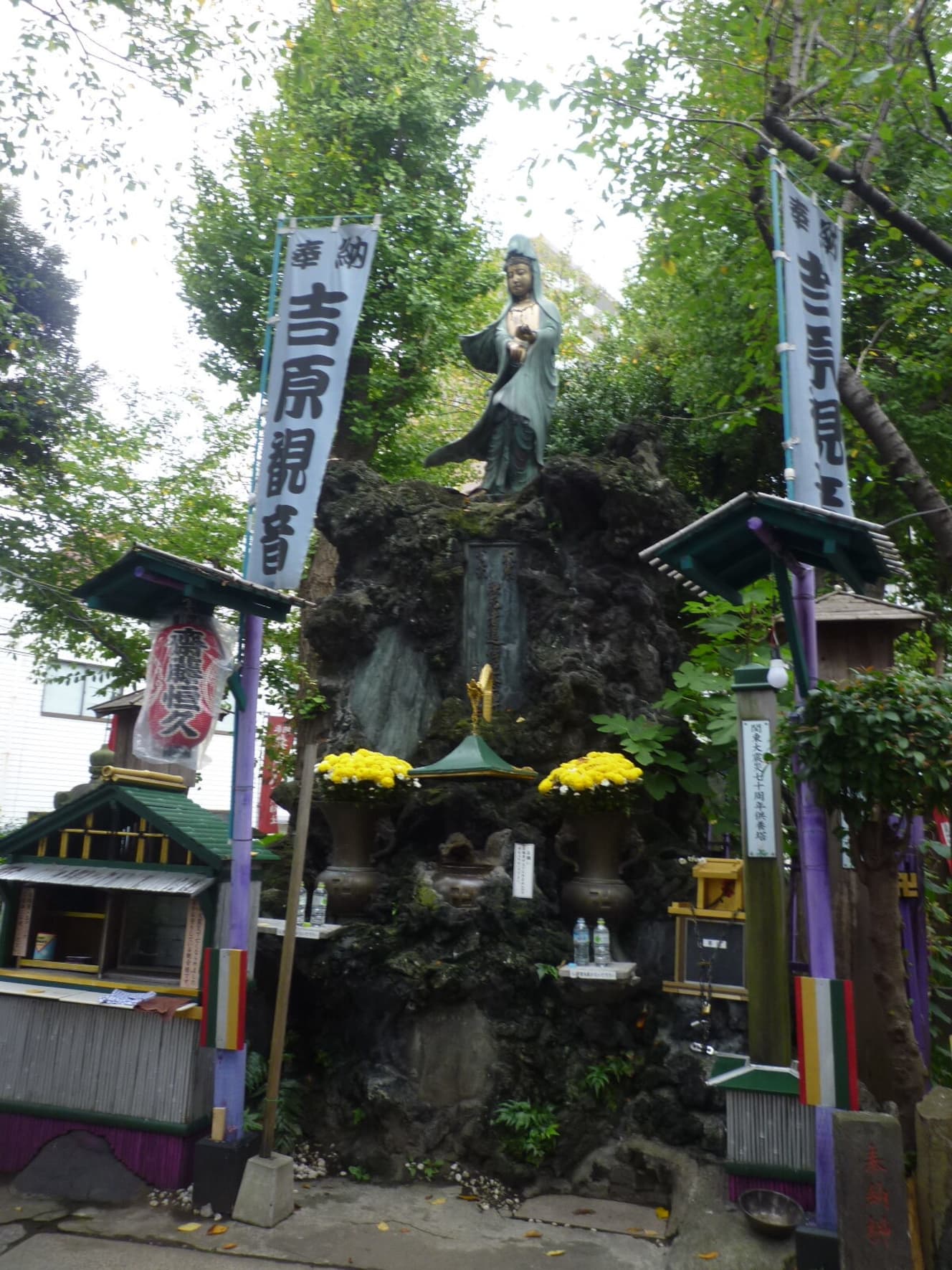Tourists trickle into upscale restaurants in groups… The history and “current location” of Yoshiwara Soap Town, a popular tourist attraction for inbound visitors
Tokyo’s Yoshiwara, “Japan’s No. 1 soap town,” is attracting a great deal of attention from overseas as well.
While reporting on the streets of Yoshiwara in late June, I occasionally saw groups of foreign customers. It was a powerful sight to see about 10 middle-aged Chinese men rushing into an upscale restaurant on Kakumachi-dori Street, where the total price was about 60,000 yen. It was as if train cars were being sucked into the tunnel one after another, and I was stunned by the sight of their fierce, undisturbed appearance. Some young Asian men drove up and toured the city in threes. There was also a lone Caucasian visitor.
On Nakanomachi Street, there were information signs for foreign customers, displaying the names of stores that accept them; one store had a sign with only a picture of five girls in school uniform and the English words “Only 20-25 Years old KAWAII Girls. Another popular budget group of soaps located in a narrow alleyway had a sign with both English, Chinese, and Korean. I was reminded once again that Yoshiwara is becoming increasingly internationalized.
In the Edo period, Yoshiwara was the only brothel in Edo officially recognized by the shogunate. While it was a “site of sexual exploitation” that was based on the sacrifice of prostitutes, it was also a place where various cultures and trends, such as paintings, ukiyoe prints, and literature, were transmitted. The thoroughly fictionalized world of Hanami, Obon, festivals, and other seasonal events was also a popular spot for visitors from the provinces to come to Edo.
After the war, the area became a red-light district, and after the Anti-Prostitution Law was fully enforced in 1958, it developed into an entertainment district. Today, Yoshiwara is the largest soap district in Japan, with approximately 126 soap parlors clustered in the area of Senzoku 3-chome and 4-chome, Taito-ku, Tokyo. The nearest station is Minowa Station on the Hibiya Subway Line. From there, walk southeast along Dote-dori Avenue for about 10 minutes to the intersection of Yoshiwara Daimon. It is also a 10-minute walk from Asakusa.
Yoshiwara’s greatest characteristic as a soap town is its “large number of establishments. Although the number has been gradually decreasing year by year, Yoshiwara still leads the pack with approximately 126 establishments, compared to 68 in Nakasu, Fukuoka, the second largest, 58 in Fukuhara, Kobe, the third largest, and 49 in Horinouchi, Kawasaki, the fourth largest. Compared to other soap towns, Yoshiwara has a higher percentage of high-end establishments, with 51 establishments offering a total of 50,000 yen or more, accounting for about 40% of the total. This high percentage is remarkable since Horinouchi in Kawasaki, which has the second largest number of high-end establishments in Japan, has 10 (approximately 20% of the total), and Nakasu in Fukuoka, the third largest, has 8 (more than 10% of the total).
Furthermore, Yoshiwara has 20 “high-class stores among high-class stores” with a total price of 80,000 yen or more. There is only one in Horinouchi, Kawasaki, and two in Nakasu, Fukuoka. In addition to the abundance of high-class establishments, Yoshiwara’s uniqueness lies in the fact that it is home to many of the most exclusive of them. Another unique feature of Yoshiwara is the absence of any other type of sex industry in the city except for soap operas. Other large bubble towns often have a mix of other types of businesses, such as store-based health clubs, esthetic clinics, and hotelier reception areas. The only other colorful districts outside of Yoshiwara where only soaps are concentrated are Kanazuen in Gifu (39), Yukoto in Shiga (31), and Kita-Ginza in Omiya (21).
Another characteristic of today’s Yoshiwara is that it is also a historic tourist attraction. Monuments and information boards have been erected at the places of origin of the Yoshiwara brothels, such as “Migariyanagi” near the Yoshiwara Daimon intersection, “Yoshiwara Shrine” and “Yoshiwara Benzaiten” located closer to Asakusa. This is something rarely seen in other entertainment districts. Only Tobita Shinchi in Osaka does something similar. The reason why Yoshiwara is “popular as a tourist spot” is probably because it still retains the “atmosphere of the old brothels. The present day, with its influx of inbound tourists, is no different from the Edo period, when many people came to Tokyo.
In the paid version of “FRIDAY GOLD,” Mr. Ikoma describes in detail about 46 Yoshiwara soaps, and also writes about how to play Yoshiwara wisely.


Interview and text: Akira Ikoma
His pen name is Master Ikoma. He is the former editor-in-chief of the "Ore no Tabi" series of sex industry magazines. With a motto of thorough on-the-spot reporting, he has completely explored all the entertainment districts in Japan. As a freelance editorial reporter, he continues "Ore no Tabi" through articles in magazines and websites and his own SNS. He is the co-author of "Fuzoku no Gendai Shi" (A Modern History of Fuzoku) and "Rupo Nihon no Ijikai Chizu" (A Report on Japan's Different Worlds Map).


